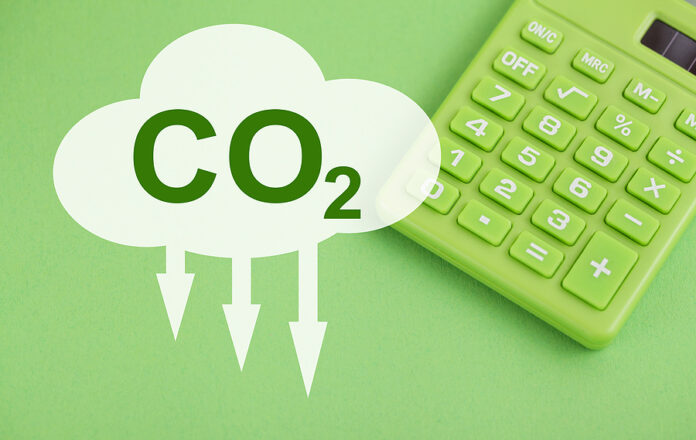
By Steve Bieszczat, Chief Marketing Officer at DELMIAWorks
If there was any doubt about the growing importance of promoting sustainability in the food and beverage (F&B) industry, a recent EY report put it to rest. Among the five consumer segments that EY predicts will shape the future of food consumption, two are “planet first” and “society first.” Together, they hit at the heart of many sustainability initiatives seeking to reduce carbon emissions in ways that preserve the environment and protect surrounding communities.
Seeking to get ahead of the curve, many of the world’s largest organizations — from major grocery and hospitality chains to F&B conglomerates — have published goals of becoming carbon neutral by 2050. To meet those milestones, they will need to go beyond the carbon footprint generated by their own operations. They will also need the middle tiers of their supply chains to document and reduce greenhouse gas emissions.
Those suppliers, contract manufacturers, and packaging providers who implement a formal sustainability and carbon footprint management program will be well positioned to become the preferred vendors for larger players in the F&B industry. Additionally, manufacturers and suppliers of all sizes can recognize significant cost savings by reducing related materials, energy, and labor-related expenditures. In the process, these companies will get a head start on meeting emerging government regulations aimed at reducing greenhouse gasses.
The task of calculating and reporting carbon footprint can look formidable, but most manufacturers and suppliers serving the F&B industry already have a powerful system on hand to automate this process: the enterprise resource planning (ERP) software already managing their operations.
Tracing the carbon footprint
Before calculating carbon footprint, it is important to understand a few fundamentals. Carbon emissions are denoted as a carbon dioxide equivalent or CO2e, i.e., the weight of CO2 emissions with the same global warming potential as an equal weight of other greenhouse gasses. The United States Environmental Protection Agency (EPA) lists 18 factors that typically comprise a businesses’ carbon footprint. For most F&B manufacturers, these include purchases of energy, ingredients and other raw materials, supplies, shipping, waste, and disposal.
The CO2e content of almost any material or activity can be found on the internet. For example:
- An average kilowatt of electricity produced in the United States generates 0.85 pounds of CO2e.
- Shipping one hundred pounds of ingredients 100 miles by truck produces 2 pounds of CO2e.
- Producing one pound of plastic for packaging can create two pounds of CO2e.
A general rule of thumb is that, if you buy it, you own its carbon footprint. This is why corporate customers and manufacturers need to understand their suppliers’ carbon footprints while tracking their own.
Adding up carbon emissions
When calculating carbon footprint, the first step is identifying any major contributors. Carbon footprint and purchasing spend tend to be highly related, so the top three or four categories of purchasing spend are often the top contributors to carbon footprint. For many manufacturers in the F&B industry, a good goal is to baseline, track, and reduce the company’s carbon footprint from 80% of the carbon-related spend.
Next in the process is estimating a baseline carbon footprint. Two primary approaches are the spend method and activity-based carbon accounting.
The spend (or revenue reporting) method calculates carbon footprint by using purchased data, online carbon equivalent tables, and/or specific equivalents provided by the manufacturer’s suppliers to produce a baseline. Then in reporting to an upstream customer, a pro-rata portion of the baseline is based on that customer’s purchase volume as a percent of total sales. For example, a customer that accounts for 20% of $100 million manufacturer’s business would be assigned 20% ownership of the baseline carbon footprint.
The activity-based carbon accounting method calculates carbon footprint per unit of production. This approach accurately calculates the carbon footprint of an item. Additionally, this method provides actionable insights by directly measuring the carbon input to a product, enabling standard root cause analysis and corrective action measures that reduce the footprint to be implemented on a systematic basis. For these reasons, activity-based reporting is expected to become the carbon footprint reporting method that upstream customers require.
Capturing carbon footprint in the ERP system
Within an F&B manufacturing environment, each production element carries some inventory of carbon footprint, so ERP systems are well suited for tracking the carbon inventory of a finished good just as they would track other items in inventory. Ideally, the ERP system will have the ability to track machine time and labor along with energy consumption, ingredients and raw materials, and shipping costs. The following are five key steps in using an ERP system to track the carbon inventory of finished goods on a per-unit basis.
- Create carbon inventory items in the ERP system’s inventory item master. For example, the average US cost for one kilowatt of electricity is 0.85 pounds of CO2e.
- Augment each bill of manufacture (BOM) with the carbon inventory items and their respective consumption per finished good unit. Raw material carbon impacts are easy to determine since the BOMs already contain the ingredient and material quantities required to calculate carbon content.
- Estimate the energy content (impact) for an item. Start by taking the operation’s entire energy cost (in CO2e) and dividing that total footprint by the total number of work center operating hours to establish an average CO2e per operating hour. Attributing energy costs to production hours takes into account the carbon costs of lighting, heating, air conditioning, axillary equipment, and other contributing factors. Once an average CO2e per operating hour is established, greater accuracy can be gained by splitting the average calculated value into high, medium, and low work center CO2e factors — for instance, assigning 70% of the average value to an efficient electric machine versus 140% of the average value for older hydraulic equipment. With recognized variations in work center energy, it is possible to reward work that is pushed to more efficient work centers and more readily maintain work center energy consumption estimates.
- Evaluate shipping’s impact on CO2e. For some F&B products, shipping may be an immaterial portion of the overall carbon footprint. To quickly test materiality, convert the business’ overall shipping expense to CO2e per dollar (or pound of product). A reasonable conversion value is 0.5 lbs. CO2e per shipment cost dollar. If the shipping cost is material, the company can either use the approximation or obtain more accurate values from carriers when adding the item to the ERP system.
- Automate carbon calculations and reporting. With the first four methods in place, the ERP system’s costing and inventory control can automatically calculate the carbon cost per item — and report carbon costs by item, customer, or category — just like any other inventory. These costs can even be printed directly on shipping labels and documentation. ERP dashboards can also be set up to share daily carbon output and progress towards goals with everyone in the company.
Treating carbon footprint as a business expense
With the proper ERP set-up, F&B manufacturers can treat the “carbon inventory” of their production operations as they would any other business expense. Additionally, it becomes possible to use the ERP system to apply lean manufacturing and continuous improvement principles to emissions reductions and often lower costs in the process. Just two of many examples include the ability to improve inventory management to prevent the overstocking of ingredients or finished goods, as well as to use production and process monitoring to quickly identify operations that produce excess scrap.
Sustainability is an acquired discipline. However, by using ERP systems to treat the carbon footprint of manufacturing activities like any other business expense, F&B manufacturers and suppliers can make the recording and reporting of environmental impacts routine and efficient while positioning themselves in the supply chain as responsible, preferred providers.
 Steve is responsible for DELMIAWorks brand management, demand generation, and product marketing. Prior to DELMIAWorks, he held senior marketing roles at ERP companies IQMS, Epicor, and Activant Solutions. His focus is on aligning products with industry requirements and positioning DELMIAWorks with the strategic direction and requirements of its manufacturing customers. Steve holds an engineering degree from the University of Kansas and an MBA from Rockhurst.
Steve is responsible for DELMIAWorks brand management, demand generation, and product marketing. Prior to DELMIAWorks, he held senior marketing roles at ERP companies IQMS, Epicor, and Activant Solutions. His focus is on aligning products with industry requirements and positioning DELMIAWorks with the strategic direction and requirements of its manufacturing customers. Steve holds an engineering degree from the University of Kansas and an MBA from Rockhurst.







